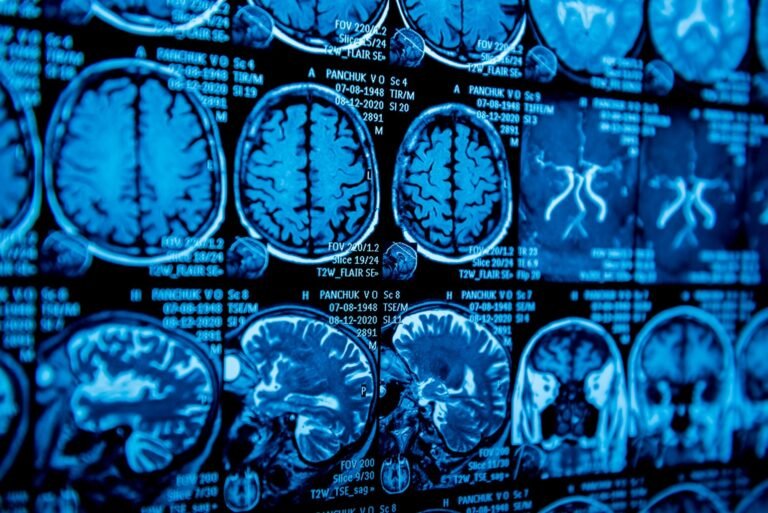New study reveals gene expression differences in brain regions linked to addiction, pointing to pathways for innovative treatments for alcohol use disorder and opportunities for drug re-use.
Study: Alcohol use disorder-related gene expression differences in the human brain. Image credit: Roman Zaiets / Shutterstock
A recent study in the journal Molecular Psychiatry provided neurobiological insights into AUD by investigating the meta-analyzed gene expression pattern in two addiction-related brain regions, namely, the nucleus accumbens (NAc) and the dorsolateral prefrontal cortex (DLPFC).
By conducting meta-analyses on multiple independent datasets, the study identified differentially expressed genes (DEGs) associated with AUD, providing robust findings due to increased statistical power and large sample size.
Meta-analyses revealed a total of 476 DEGs, with 25 overlapping between NAc and PFC, highlighting both common and region-specific gene expression patterns associated with AUD.
Prevalence and neurological insights into AUD
Millions of deaths occur every year due to alcohol abuse. Although multiple genome-based studies have indicated the heritable nature of AUD, the gene regulatory landscape associated with this disorder has remained unclear. Understanding the neurobiological mechanisms should help identify a potential target for the development of effective interventions to alleviate AUD.
NAc, prefrontal cortex (PFC) and DLPFC regions of the brain are associated with reward pathways and addiction as components of the dopaminergic mesolimbic system. These areas of the brain are closely related to addiction. For example, the NAc is associated with the binge/intoxication stage and the DLPFC engages the engagement/anticipation stage.
The PFC regulates dopamine release in the NAc. Multiple studies have shown that PFC impairment negatively affects executive function and impulsivity and increases engagement in risky behavior. Overall, the NAc and PFC brain regions are highly associated with AUD.
A limited number of studies have investigated massive RNA-seq gene expression associated with AUD in the human brain. This study’s use of meta-analysis on independent datasets greatly enhances the reliability of the findings. These studies allowed the identification of differential gene expression (DGE) in the brains of patients with AUD.
About the study
Postmortem human NAc and DLPFC samples were obtained from 122 candidates, i.e. 61 AUD and 61 non-AUD, as part of the Lieber Institute for Brain Development (LIBD) Human Brain Repository.
AUD cases and controls were identified based on Diagnostic and Statistical Manual of Mental Disorders-5th edition (DSM-5) symptoms. AUD cases were those who developed more than two symptoms within twelve months, while non-AUD controls were those with no lifetime history of DSM-5 AUD symptoms. In addition, non-AUD cases showed postmortem ethanol toxicology of less than 0.06 g/dL.
AUD cases and controls were matched for major depressive disorder (MDD) and smoking status. It should be noted that MDD and smoking are the two most common comorbidities of AUD.
RNA was extracted from AUD and non-AUD tissues and Illumina TruSeq Total RNA Stranded RiboZero Gold was used for library preparation. These samples are referred to as the NAc_LIBD and PFC_LIBD datasets. Other samples obtained from UT Austin and NYGC were referred to as NAc_UT, PFC_UT, and PFC_NYGC, respectively.
All RNA-seq data from different sources were processed using various bioinformatics tools, including Trimmomatic and GENCODE v40 (GRCh38) transcriptome, and quality control (QC) metrics were calculated. The proportion of different cell types, such as microglia, macrophages, excitatory neurons, oligodendrocyte progenitor cells (OPCs), GABAergic neurons, oligodendrocytes, T-cells, astrocytes and medium spiny neurons (MSNs), was calculated for PFC and NAc.
Linear regression analysis was performed to determine the association between cell type ratios and AUD status based on smoking, age, sex, and MDD. Bioinformatic tools were also used to identify DGE associated with AUD cases and to understand gene co-expression. Specifically, gene co-expression analysis using weighted gene co-expression network analysis (WGCNA) revealed shared and region-specific gene networks in the NAc and PFC, further deepening insights into the molecular mechanisms associated with AUD.
Study findings
In the NAc_LIBD and PFC_LIBD datasets, 90 and 98 differentially expressed genes (DEGs) were identified, respectively. Twelve genes were found to overlap in both datasets. No DEGs were identified from 20,958 genes tested in the NAc_UT dataset. In the PFC_UT and PFC_NYGC datasets, 14 and 53 DEGs were identified, respectively. These newly identified DEGs associated with AUD provided insight into the gene expression signatures of AUD in specific brain regions.
A total of 447 AUD-related DEGs were identified in the PFC. However, 25 genes were found to be differentially expressed in NAc and PFC that were associated with AUD. The top five DEG genes identified in the meta-analysis of overlapping genes in the NAc samples were ODC1, ZNF844, ARRDC3, FAM225Aand GUSBP11, and in all PFC samples it was TXNIP, ODC1, HMGN2, SLC16A9and SLC16A6.
The current study identified CSPP1 as the only gene significantly associated with AUD in the caudate nucleus (CN). no NAc meta-analysis genes were associated with AUD in ventral striatum (VS) and putamen (PUT). No significant PFC meta-analysis genes were found to be associated with AUD in CN, VS, or PUT.
Gene set enrichment analysis (GSEA) for the NAc and PFC meta-analyses revealed four KEGG (Kyoto Encyclopedia of Genes and Genomes) pathways. Weighted cross-region gene co-expression network analysis (WGCNA) revealed that no module was associated with AUD. The NAc_LIBD and PFC_LIBD modules were compared, showing that 97.8% of the genes in these modules overlapped, suggesting high levels of coexpression between regions.
Therapeutic intervention for AUD
The Drug Repurposing Database tool was used to identify potential DEG as a therapeutic target for AUD. Of particular interest, 29 drug compounds targeting DEGs in NAc and 436 drug compounds targeting DEGs in PFC were identified, highlighting the potential for drug repurposing for the treatment of AUD. Of the 54 identified DEG genes in the NAc, 11 genes were targeted by 29 drug compounds. Furthermore, 64 of the top 100 genes with AUD-associated DGE in PFC could be targeted by 436 drug compounds. Therefore, the current study revealed potential pharmacotherapies for AUD.
